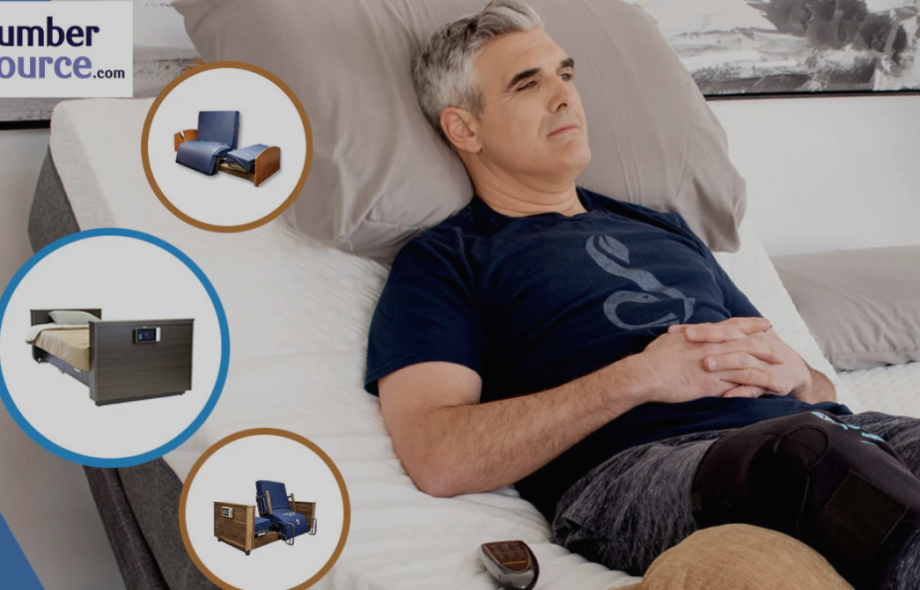In the journey of long-term care, recovery, or assisted living, comfort, safety, and flexibility become paramount. That’s where hospital adjustable beds shine—they bring hospital-grade features into home settings. Among these, electric hospital beds stand out as advanced solutions providing both ease and functionality.
SlumberSource, a key player in home medical equipment, emphasizes these exact benefits in their product lineup and guidance.
What Are Hospital Adjustable Beds?
A hospital adjustable bed (also called a medical or home care bed) is designed to adjust various parts of its frame—such as head, foot, or entire bed height—to better support the patient and caregiver. Unlike standard beds, they are engineered for medical, therapeutic, and mobility purposes.
These beds may offer:
Elevation of head or foot sections
Hi-Lo height adjustment
Side rails or safety enclosures
Integration with mattresses designed for pressure relief or alternating pressure
SlumberSource markets “Hi-Low adjustable beds” and “hospital beds” specifically for homecare environments.
Why Choose Electric Hospital Beds?
When the raising and lowering motions are powered rather than manual, the bed becomes an electric hospital bed—a step up in convenience, independence, and flexibility.
Benefits of Electric Adjustment
Effortless control
Motorized adjustment via remote or control panel lets the patient or caregiver reposition the bed without manual leverage. This is critical especially for patients with limited strength or mobility.
Frequent repositioning for health
Many patients need frequent changes in posture (e.g., to prevent pressure ulcers, improve circulation, aid breathing). Electric beds make such adjustments quicker, safer, and more consistent.
Height adjustments (Hi-Lo functions)
Electric hospital beds with variable height (Hi-Low) help caregivers maintain ergonomic postures and assist patient transfers. According to medical insurers’ policies, electric powered height and head/foot adjustments are considered medically necessary when frequent repositioning is needed.
Better safety and independence
Since changes are motor-driven, the risk of mechanical failure or accidental pinching (as in manual cranks) is reduced. Also, patients who retain some mobility can self-adjust the bed, enhancing autonomy.
SlumberSource highlights several electric and motorized models (Hi-Low, sleep-to-stand) in their offerings.
Key Features to Look For
When comparing hospital adjustable beds—especially electric ones—these features matter most:
1. Range of Motion & Segment Control
The ability to independently raise/lower head, foot, or mid sections is essential. Some beds also tilt or provide Trendelenburg/Reverse Trendelenburg angles.
2. Height Adjustability (Hi-Low)
Full electric height range enables the bed to be lowered close to the floor for safety and raised for easier caregiver access. SlumberSource’s “Hi-Low beds” focus on that balance.
3. Mattress Compatibility
To maximize the benefits, pair the bed with a pressure-relief or alternating pressure mattress. These help reduce risk of bedsores.
4. Side Rails & Safety Features
Rails, retractable bars, alarms, and patient exit sensors can enhance security. The right bed should integrate safety without obstructing care.
5. Build Quality and Weight Capacity
Choose robust frames, strong motors, and a capacity sufficient for expected patient weight plus mattress and accessory load.
6. Controls & Backup Systems
Look for user-friendly hand controls, nurse control overrides, battery backup for power outages, and emergency lowering mechanisms.
7. Ease of Delivery & Installation
Because hospital adjustable beds are complex, professional delivery, set-up, and training are critical. SlumberSource offers fast delivery and expert installation as part of their service.
Who Benefits from These Beds?
These beds are suited for a wide range of users, including:
Recovering patients at home (post-surgery, extended rest)
Elderly individuals needing safe, adjustable sleeping support
Chronic illness patients who require frequent repositioning
Long-term care / assisted living settings
Caregivers needing ergonomic support
By bringing hospital-grade functionality into home environments, hospital adjustable beds and electric hospital beds transform care settings—offering dignity, comfort, and safety.
How to Select the Right Hospital Adjustable / Electric Hospital Bed
Here’s a checklist and practical tips:
Assess patient needs
How much mobility do they retain?
Do they require frequent adjustments (head, foot)?
Is height adjustment needed for ease of transfer?
Check room dimensions and doorways
The bed plus its rails and frame must fit through hallways, doors, and into the patient’s room.
Decide on mattress type
Matching a pressure-relief mattress is as important as the bed itself.
Plan for servicing & warranty
Choose vendors who support repairs, spare parts, and routine servicing.
Prioritize safety & control usability
Test the bed’s controls, rail systems, and emergency features before committing.
Verify delivery and setup
The bed should come fully installed and tested—not just delivered boxed.
Given these, many caregivers and patients gravitate toward electric hospital beds because of the ease and responsiveness they provide.
In Conclusion
Hospital adjustable beds—especially electric hospital beds—represent a bridge between clinical-level care and comfortable home living. Their flexibility, safety features, and adjustability make them invaluable in supporting recovery, chronic care, and assisted living. Companies like SlumberSource enable this shift by providing a broad selection of adjustable and motorized beds delivered and installed for home use.
 :
https://www.pinterest.com/slumbersourceusa/
:
https://www.pinterest.com/slumbersourceusa/

